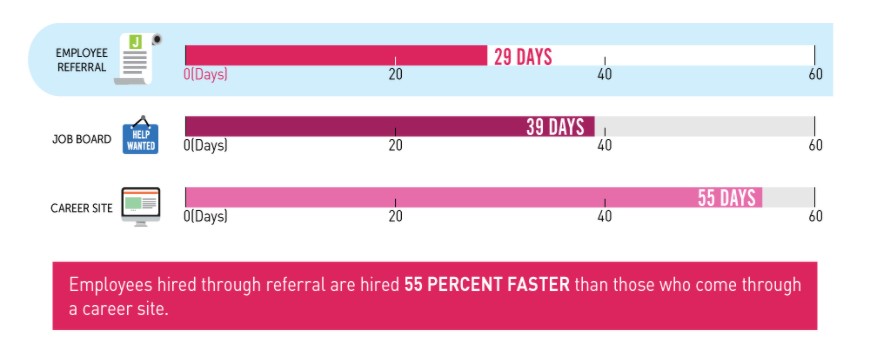Internal Employee Referral Programs: How they Work and Why They’re Great
- March 1, 2017
- By: Vonigo
Hiring a new member of your team is always like walking a tightrope. They have to be qualified, likeable, and a good cultural fit. And the faster they can fit into the fabric of your team, the better.
Now, find that candidate in the sea of applications sent your way. It’s even harder if you’ve never met them, and often you can only talk to people who can vouch for them over the phone or via email.
It’s hardly a wonder why we still don’t have the job of hiring down to an exact and replicable science.
Time is Money
Hiring new staff, especially the good ones, can be time consuming. This is where an internal employee-referral program is a great addition to your hiring process.
Friends and contacts from your employees are quicker and less expensive to hire. They’re also faster to train, AND they’ll stick around longer. Sound too good to be true? We thought you’d say that.

Source: Undercover Recruiter
Employee-Referrals are Quicker and Less Expensive to Hire
We said it and we stand by it. Assuming the employee that’s referring their friend is a good and trustworthy employee, the person they are putting forward is likely to be as well. Your employees want their recommendations to be taken seriously. That’s why they are putting them forward for your consideration in the first place. They have a double stake: they’d like to get their friend a job — having a pal on the workforce makes coming to work a little better, no matter how good your job is. But they also want to demonstrate that they have good judgement. Having their boss agree with them is a pretty great way to affirm that.
Employee referrals are also less expensive to hire — and not just because of the cash saved on advertising the position. Getting a hire into the position quickly makes sure that your daily operations stay on time and organized: you’ve done all that work on your job scheduler, and you don’t want it to go to waste. According to the Undercover Recruiter (and as seen in the graphic above), an employee referral gets the job filled within 29 days of posting, on average. “Traditional” methods typically took 39 days or more… can you spare being a man down for 10 extra days, or more? Do you want to, if you can help it?

Fast train, get it? Too much?
They Are Faster to Train
When you bring in a new hire, the pattern typically goes like this: new employee wants to integrate quickly. They ask a lot of questions. You are impressed by their curiosity, but meanwhile they are disoriented and overwhelmed. They hang back and observe jobs carefully, which doesn’t hurt anyone but it doesn’t really make anything move faster or more efficiently. You remember how this has gone for every person you have hired in the last few years. You resign yourself to two weeks of careful observance and a lot of tense, not-entirely-truthful “Yeah, things are going great!” responses from your new hire as they get used to the new processes.
This won’t be the case with an internally-referred hire. When a member of your team vouches for a hire of yours, they aren’t just doing a pal a favor. Their judgement is up for review. They’ll understand that they are to a certain degree, responsible for making their recommendation a good one. In turn, the new hire has a member of the team that they are familiar with: if they have a question about company policies, there’s a friendly person to pull aside. On-boarding is made much faster, and they become more confident in their work much sooner.
They’ll Stick Around Longer
 The recruiting experts at ERE Recruiting have data suggesting that internal referrals enjoy a 46% retention rate in the first year of employment. Considering that the next highest rate is 33% (from career sites), that’s pretty great. More good news? It’s a two-way street: when your employees are making recommendations for the company, they’ll be more successful if they really understand what your business values in an employee. The more they understand about what your business’ dream employee is, the better they’ll be at making suggestions… and at embodying those values themselves.
The recruiting experts at ERE Recruiting have data suggesting that internal referrals enjoy a 46% retention rate in the first year of employment. Considering that the next highest rate is 33% (from career sites), that’s pretty great. More good news? It’s a two-way street: when your employees are making recommendations for the company, they’ll be more successful if they really understand what your business values in an employee. The more they understand about what your business’ dream employee is, the better they’ll be at making suggestions… and at embodying those values themselves.
Enacting an internal referral program is a great way to build a strong team. Your candidates have an opportunity to be a small part of the hiring process, and to better understand how they can contribute to a great company culture. Rewarding your team for their efforts reinforces your appreciation, and motivates thoughtful recommendations.



